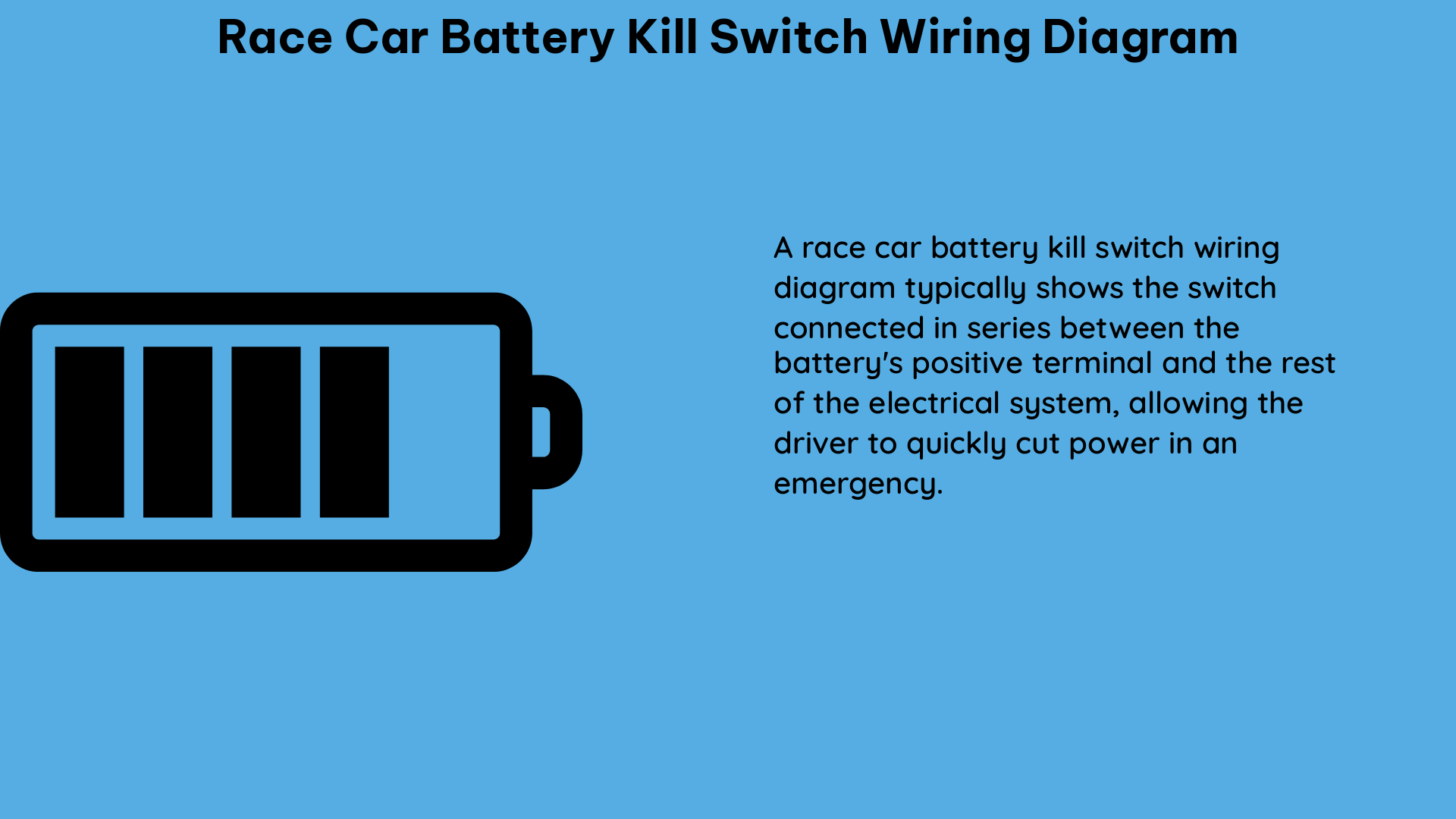A race car battery kill switch is an essential safety feature in motorsports, designed to disconnect the battery and shut off electrical components in case of an emergency. The wiring diagram for a race car battery kill switch typically involves disconnecting the positive battery cable from the starter and connecting it to the switch, which in turn is connected to the battery and other electrical systems.
Understanding the Technical Specifications
The technical specifications for a race car battery kill switch wiring diagram can vary depending on the specific requirements of the racing organization and the car’s electrical system. For instance, the National Hot Rod Association (NHRA) requires that the kill switch completely shuts down the engine when activated, and the switch must be easily accessible to the driver.
NHRA Requirements
- The kill switch must completely shut down the engine when activated.
- The switch must be easily accessible to the driver.
- The switch must be clearly labeled and visible to the driver and safety crew.
- The switch must be a push/pull or toggle-style design.
- The switch must be wired to disconnect the positive battery cable from the starter.
SCCA Requirements
- The kill switch must be located within reach of the driver.
- The switch must be clearly labeled and visible.
- The switch must be wired to disconnect the battery from the electrical system.
- The switch must be a push/pull or toggle-style design.
Wiring Approaches
When it comes to the wiring of a race car battery kill switch, there are different approaches. Some wiring diagrams involve disconnecting the alternator’s power source when the switch is off, while others keep the alternator powered all the time. A four-post kill switch is recommended for powering down the entire vehicle’s power systems, ensuring no surprises during operation.
Disconnecting the Alternator
- Disconnect the positive battery cable from the starter.
- Connect the positive battery cable to the kill switch.
- Connect the kill switch to the battery and other electrical systems.
- Disconnect the alternator’s power source when the switch is off.
Keeping the Alternator Powered
- Disconnect the positive battery cable from the starter.
- Connect the positive battery cable to the kill switch.
- Connect the kill switch to the battery and other electrical systems.
- Keep the alternator powered all the time, even when the switch is off.
Wiring Specifications and Measurements

In terms of measurable and quantifiable data, a race car battery kill switch wiring diagram typically involves the use of specific gauge wires for various connections. The choice of wire gauge is crucial for ensuring the safe and reliable operation of the kill switch.
Wire Gauge Recommendations
- Battery to Kill Switch: 2-gauge wire
- Kill Switch to Starter Solenoid: 10-gauge wire
- Kill Switch to Other Electrical Systems: 10-gauge wire
- Ground Connections: 4-gauge wire
It’s important to note that these wire gauge recommendations are general guidelines, and the specific requirements may vary depending on the racing organization, the car’s electrical system, and the overall power demands of the vehicle.
Fuse Recommendations
In addition to the wire gauge, it’s also essential to incorporate fuses into the kill switch wiring diagram to protect the electrical system from potential overloads or short circuits.
- Battery to Kill Switch: 100-amp fuse
- Kill Switch to Starter Solenoid: 50-amp fuse
- Kill Switch to Other Electrical Systems: 30-amp fuse
The fuse ratings should be selected based on the maximum current draw of the connected components and the wire gauge used in the circuit.
Conclusion
A race car battery kill switch is a critical safety feature that must be properly installed and wired to ensure the safe operation of the vehicle during motorsports events. By understanding the technical specifications, wiring approaches, and measurable data points, you can ensure that your race car’s kill switch is installed correctly and meets the requirements of the racing organization.
Remember to always consult the specific rules and regulations of the racing series you are participating in, as the requirements may vary. Additionally, it’s recommended to have a qualified electrician or race car specialist review and validate your kill switch wiring diagram to ensure compliance and safety.
Reference:

The lambdageeks.com Core SME Team is a group of experienced subject matter experts from diverse scientific and technical fields including Physics, Chemistry, Technology,Electronics & Electrical Engineering, Automotive, Mechanical Engineering. Our team collaborates to create high-quality, well-researched articles on a wide range of science and technology topics for the lambdageeks.com website.
All Our Senior SME are having more than 7 Years of experience in the respective fields . They are either Working Industry Professionals or assocaited With different Universities. Refer Our Authors Page to get to know About our Core SMEs.